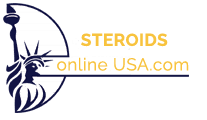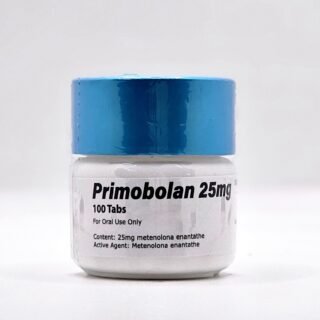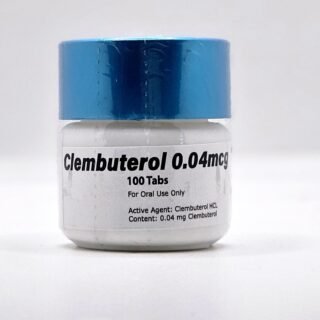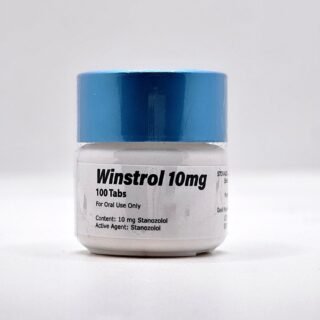Category
- Best Peptides for muscle growth
- Geno Pharma Domestic Warehouse 2 (Canada&USA) (Ships in 1–3 days) Faster!
- GP(Domestic Shipping US) Warehouse 1
- Human Pharma Premium
- Phar Labs Premium-Select
- Steroids on Sale USA, Real Steroids Online
- New arrivals in USA
- Most popular steroids in USA
- Antiestrogens / Gonadotropins
- Bangkok Steroid USA
- Biopharma Steroid USA
- British Dragon
- Anabolic Steroids for Horses
- Fat-burners
- Gen Pharma USA
- Medical Pharma Steroid USA
- Medical Tech Steroid USA
- Novocrine Steroids
- HGH USA
- Omega Labs Steroid USA
- Rotterdam Steroids USA
- SARMs USA
- Sciroxx
- Sydgroup Steroid USA
- Big vetenary Steroid USA
- Watson Steroids
- XT Labs Steroids
Most Popular steroids USA
-
 Primobolan Pills 25mg 100 pills Domestic USA
Primobolan Pills 25mg 100 pills Domestic USA
$99.00Original price was: $99.00.$85.00Current price is: $85.00. -
 Clenbuterol for Sale 40mcg 100 Tabs - GP Premium Domestic USA
Clenbuterol for Sale 40mcg 100 Tabs - GP Premium Domestic USA
$99.00Original price was: $99.00.$65.00Current price is: $65.00. -
 Winstrol Tablets for Sale 10mg 100 pills GP Domestic
Winstrol Tablets for Sale 10mg 100 pills GP Domestic
$99.00Original price was: $99.00.$75.00Current price is: $75.00.

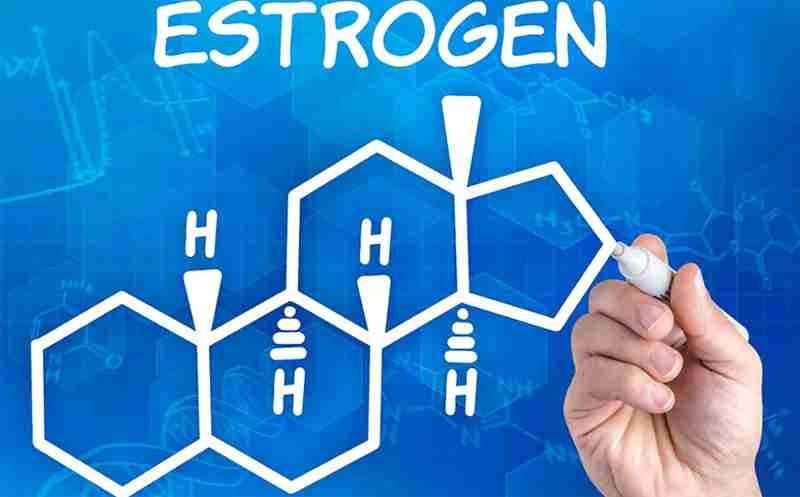
Table of Contents
ToggleAnabolic steroid aromatization
You most probably have heard that some anabolic steroids aromatize in the body, but which ones do so and why they do that?
For this we have to review the testosterone metabolism in the body.
Androgens are the precursors of all steroid hormones (with the exception of progestins), therefore androgens are needed in males and females, and produced in different organs (testis, ovaries and adrenal glands).
The major androgen in men is testosterone (the most potent androgen), produced in the testis, it acts either directly in androgenic receptors or after being converted to dihydrotestosterone (DHT); Other major circulating androgens in men include androstenedione, androstenediol, dehydroepiandrosterone (DHEA) and dehydroepiandrosterone sulfate (DHEA-S). [1]
Several steps are needed for androgen production, beginning with cholesterol, this is represented in the next figure:
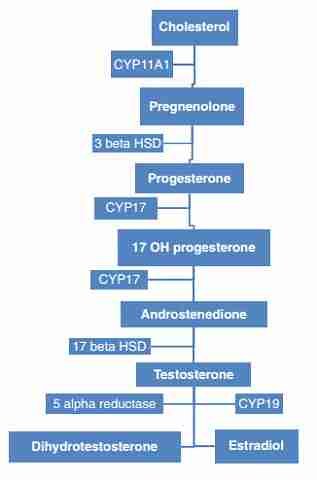
As you can see, the steps are: cholesterol > pregnenolone > progesterone > 17-OH progesterone > androstenedione > testosterone
Once in this step, the available testosterone will be metabolized either by 5 alpha reductase hormone (making dihydrotestosterone) or by aromatase (CYP19) making estradiol (aromatization), as shown in the next figure
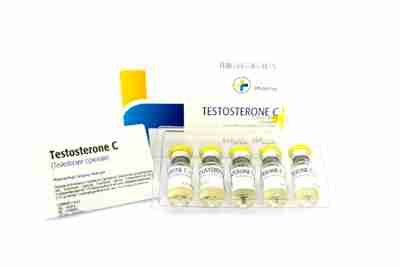
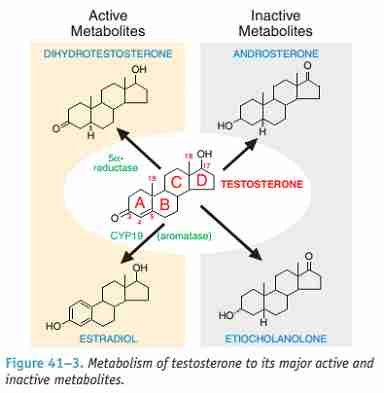
About 85% of estrogens circulating in men are made in extra-gonadal sites (adipose tissue mainly), the remainder 15% is made by the gonads (testis)
The conversion will be directly related to the substrate available, meaning that, the more testosterone available in the adipose tissue (fat tissue) the more conversion will take place, and this is completely reasonable as estrogens serve many purposes in men, being essential for our physiology.
Being this a conversion of androgens, the more androgenic a substance is, the more aromatization will take place (and more estrogenic production therefore)
With structural modifications to testosterone, the anabolic effects of androgens can be enhanced but, even so, these cannot be divorced entirely from their androgenic effects. Hence, a more accurate term for anabolic steroids is anabolic–androgenic steroids. [2]
This will cause users of anabolic androgenic steroids to have high circulating estrogen levels, even typical levels of women during a normal menstrual cycle; this can cause breast pain and gynecomastia (which is often irreversible) and may be present in 10-34% of users according to a 2004 paper. [3]
Some anabolic steroids are considered to be not aromatized and therefore will not increase estrogen levels, these are:
⦁ Oxandrolone (Anavar)
⦁ Dihydrotestosterone
⦁ Trenbolone
⦁ Fluoxymesterone (Halotestin)
⦁ Drostanolone
⦁ Methyltrienolone (metribolone)
⦁ Furazabol
⦁ Turinabol
⦁ Methenolone
⦁ Mesterolone
⦁ Stanozolol
None of this anabolic steroids are substrate of the aromatase enzyme (meaning it cannot bind this agents) so these will not have any estrogenic effect in the body.
Finally, some agents are considered to be highly estrogenic, like:
⦁ Oxymetholone (anadrol)
⦁ Mibolerone
⦁ Methyltestosterone
⦁ Bolasterone
⦁ Norethandrolone
With these agents, high estrogenic activity must be expected and aromatase inhibitors or anti-estrogenic agents should be used.
Bibliography
1-. The Reproductive System at a Glance. 4th Edition by Linda J. Heffner, Danny J. Schust
2-. Br J Pharmacol. 2008 Jun; 154(3): 502–521. Pharmacology of anabolic steroids. A T Kicman
(http://www.ncbi.nlm.nih.gov/pmc/articles/PMC2439524/ )
3-. Regul Toxicol Pharmacol. 2010 Jun;57(1):117-23. doi: 10.1016/j.yrtph.2010.02.001. Epub 2010 Feb 12. Adverse health effects of anabolic-androgenic steroids. van Amsterdam J, Opperhuizen A, Hartgens F.
(http://www.ncbi.nlm.nih.gov/pubmed/20153798 )
Share this page:
- Click to share on X (Opens in new window) X
- Click to share on Facebook (Opens in new window) Facebook
- Click to email a link to a friend (Opens in new window) Email
- Click to share on LinkedIn (Opens in new window) LinkedIn
- Click to share on Reddit (Opens in new window) Reddit
- Click to share on Pinterest (Opens in new window) Pinterest
- Click to share on Telegram (Opens in new window) Telegram
- Click to share on WhatsApp (Opens in new window) WhatsApp
- Click to share on Tumblr (Opens in new window) Tumblr
Written by Steroids USA
Pay with WISE APP or Remitly
Pay with WISE App or Remitly
Fast money transfers from USA for fast delivery of steroids
Secure delivery in USA
100% reliable shipping in USA
24x7 Support
Online 24 hours
Low cost delivery
Great shipping prices in USA
BULK ORDER DISCOUNT
If you are a reseller in the USA you can get a special DISCOUNT, we can give you up to 50% or more on bulk orders. If you want to make a bulk order, we can negociate for orders of over USD$4,000, contact us by email.
Steroids info



